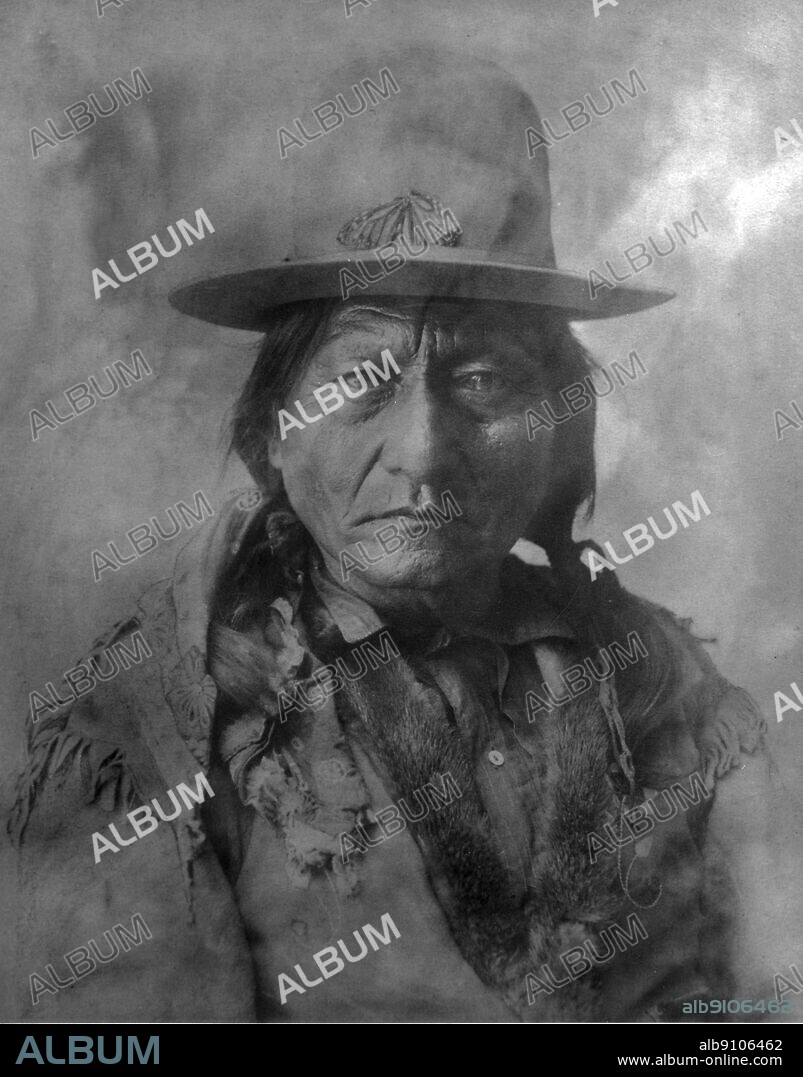alb9106462
Portrait of Sitting Bull. Sioux. Hunkpapa Sioux (1831-1890). Sitting Bull, Lakota Medicine Man and Chief was considered the last Sioux to surrender to the U.S. Government.. In the early 1850s, the Lakota (Sioux) had begun to feel the pressure of the white expansion into the Western United States. Sitting Bull did not participate in the resistance until 1863 when the settlers threatened the Hunkpapa hunting grounds. He had distinguished himself from an early age as a leader, killing his first buffalo at ten and "counting coup" (touching the enemy without their knowing) at fourteen. Because of his leadership during these times he was named principle chief of the Teton Sioux Nation in 1867.

|
Add to another lightbox |
|
Add to another lightbox |



Buy this image.
Select the use:

Caption:
Portrait of Sitting Bull. Sioux. Hunkpapa Sioux (1831-1890). Sitting Bull, Lakota Medicine Man and Chief was considered the last Sioux to surrender to the U.S. Government.. In the early 1850s, the Lakota (Sioux) had begun to feel the pressure of the white expansion into the Western United States. Sitting Bull did not participate in the resistance until 1863 when the settlers threatened the Hunkpapa hunting grounds. He had distinguished himself from an early age as a leader, killing his first buffalo at ten and "counting coup" (touching the enemy without their knowing) at fourteen. Because of his leadership during these times he was named principle chief of the Teton Sioux Nation in 1867.
Credit:
Album / TopFoto
Releases:
Model: No - Property: No
Rights questions?
Rights questions?
Image size:
4491 x 5725 px | 73.6 MB
Print size:
38.0 x 48.5 cm | 15.0 x 19.1 in (300 dpi)
 Pinterest
Pinterest Twitter
Twitter Facebook
Facebook Copy link
Copy link Email
Email
